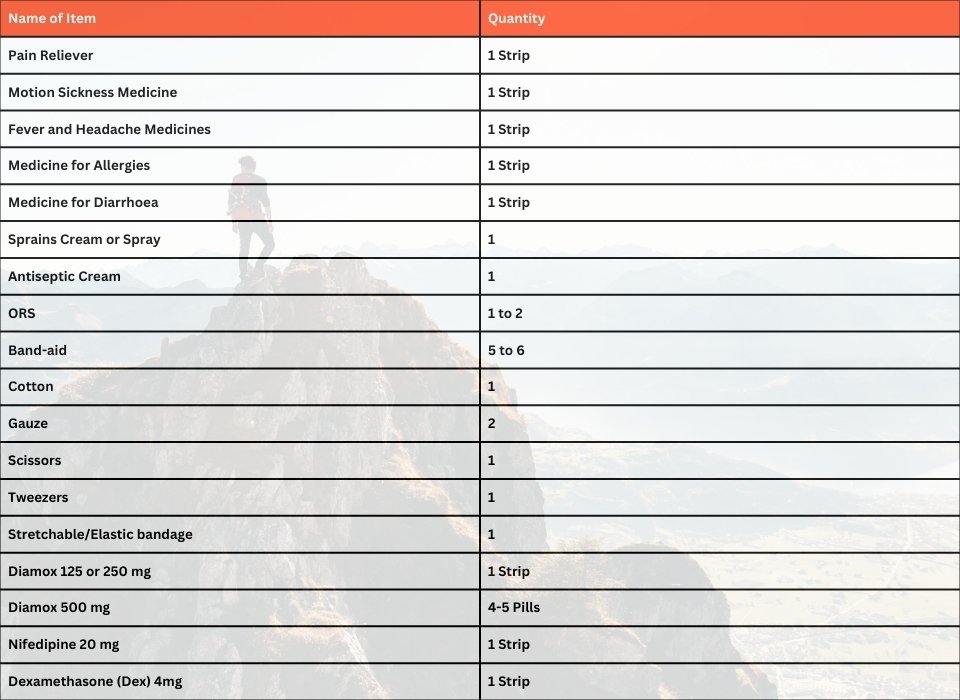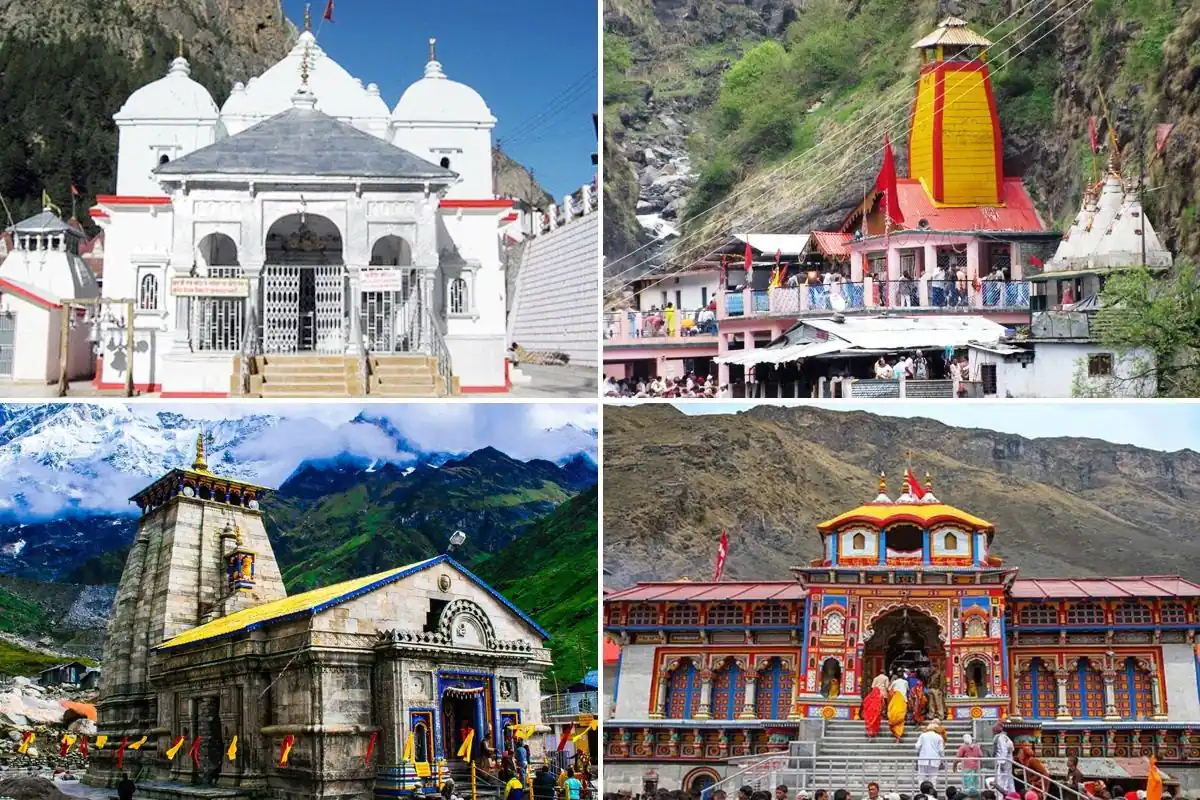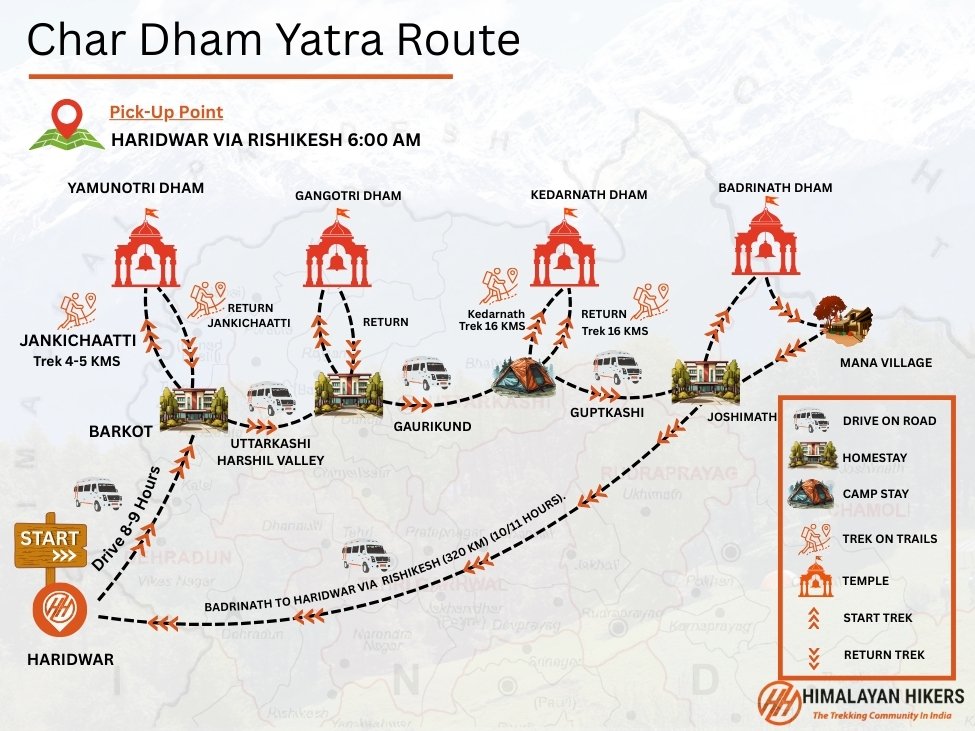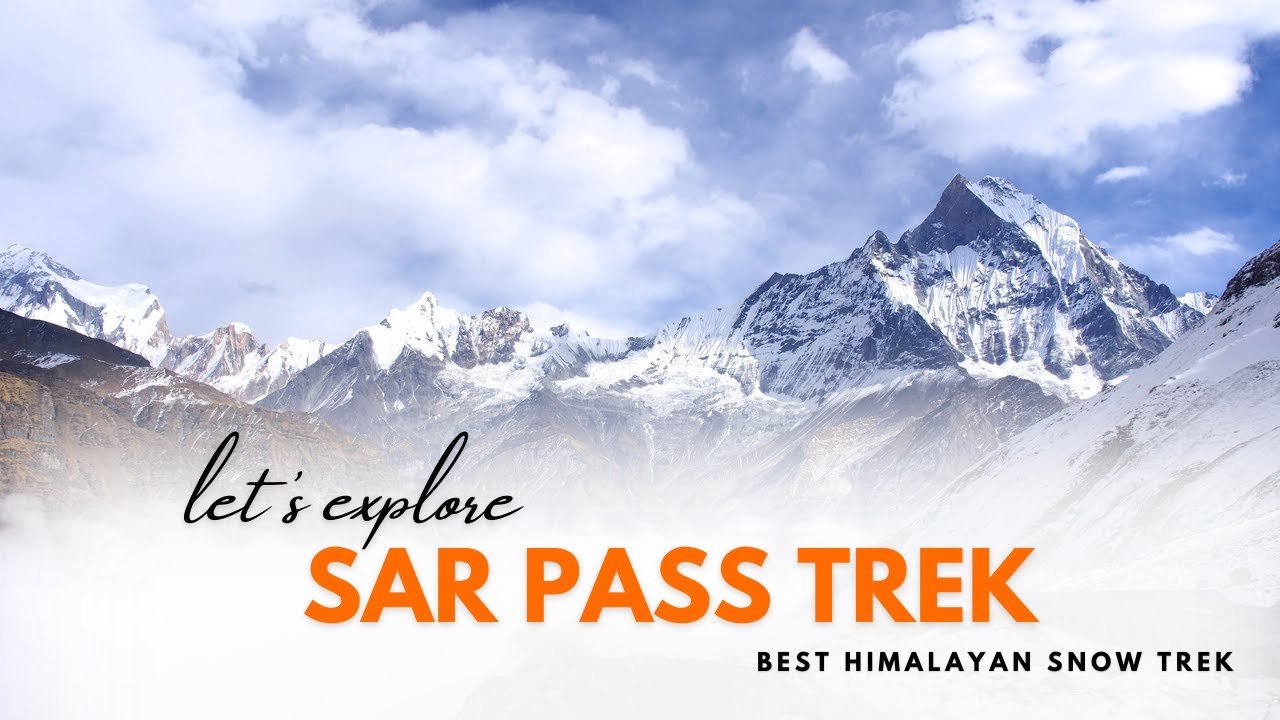Char Dham Yatra is a pilgrimage tour that covers four sacred Hindu temples located in the state of Uttarakhand, India. The four temples are Yamunotri, Gangotri, Kedarnath, and Badrinath
Here are some highlights of each temple:Yamunotri: Located at an altitude of 3293 meters above sea level, Yamunotri temple is dedicated to the goddess Yamuna. The highlight of the temple is the hot water springs called “Janki Chatti” and “Surya Kund,” which are believed to have medicinal properties.
Char Dham Yatra Guide
Day 01- Pickup to you Haridwar after Ganga Pooja – Drive to Jankichatti via Mussoorie, Kamptifall, Nainbag, Damta, Barkot (218 km) (8/9 Hours) overnight stay Hotel.
Day 02- Early morning Trek from Jankichaatti to Yamunotri Dham (05 km) up and after Yamuna maiya Darshan and after pooja come back to Jankichatti hotel overnight stay Hotel.
Day 03- Early morning Drive from Jankichaatti To Gangotri Dham via Uttarkashi and Harshil Valley (222 km) (8/9 Hours) overnight stay Hotel and evening join Ganga Arti darshan.
Day 04- Morning again visit Ganga temple and after pooja darshan same day Drive to Uttarkashi overnight Stay Hotel (108 km) (6/7 hours) overnight stay Hotel.
Day 05- After breakfast Drive from Uttarkashi to Guptkashi (220) (8/9 Hours) overnight stay Hotel.
Day 06- Early morning drive from Guptkashi to Gaurikund (30 km) same day Trek to Kedarnath (16 km) (8/9 hours) overnight stay Camp/ Hotel – Evening join Kedarnath Arti Darshan back to hotel.
Day 07- Early morning again visit Kedarnath temple pooja and Darshan then back to Gaurikund (16 km) (7/8 hours) same day Drive to Guptkashi overnight stay Hotel.
Day 08- Early morning Drive from Guptkashi to Badrinath Dham (215 km) (8/9 Hours) overnight stay Hotel and Evening join Badrinath Arti Darshan pooja.
Day 09- After breakfast again visit temple for pooja Darshan and back to hotel, after lunch visit to Mana village and Bhimpool, Viyasguphavasudhara fall then come back to Hotel.
Day 10- Early morning Drive from Badrinath to Haridwar via Rishikesh (320 km) (10/11 hours).
Day 1:Pickup to you Haridwarafter Ganga Pooja – Drive to Jankichatti via Mussoorie, Kamptifall, Nainbag, Damta, Barkot
Total distance:(218 km) (8/9 Hours)
Mode of journey: By Tempo Traveller 13+D/ taxi, (Non-AC Vehicle)
Night stay:Hotel
Note: AC vehicles are only available for customized trek packages.Haridwar is a holy city in the Indian state of Uttarakhand, situated on the banks of the river Ganges. It is a popular destination for pilgrims and tourists alike, and there are several places to visit and things to see in and around the city.
Here are some of the popular tourist attractions that you can see on a drive from Haridwar to JankiChatti:
Chandi Devi Temple: Located atop the Neel Parvat hill, the Chandi Devi Temple is a popular pilgrimage site and offers a panoramic view of the city.
Mansa Devi Temple: Dedicated to Goddess Mansa Devi, this temple is located on top of the Bilwa Parvat hill, and can be reached by a ropeway ride.
Daksheswara Mahadev Temple: This ancient temple is dedicated to Lord Shiva and is believed to be one of the oldest temples in the city.
Har Ki Pauri: This is a famous ghat on the banks of the Ganges, and is considered to be one of the most sacred places in Haridwar. It is also a popular spot for the evening Ganga Aarti ceremony.
JankiChatti: JankiChatti is a small town located at an altitude of 2,650 meters, and is the starting point for the trek to Yamunotri, one of the Char Dham shrines.
Yamunotri: The Yamunotri temple is located at an altitude of 3,293 meters and is dedicated to Goddess Yamuna. It is one of the four shrines that make up the Char Dham Yatra.
Kempty Falls: Located near Mussoorie, the Kempty Falls is a popular tourist spot and is known for its beautiful cascading waterfall.
These are just a few of the popular attractions that you can see on a drive from Haridwar to JankiChatti. There are several other places to visit and things to do, depending on your interests and preferences.
After 1 hour you will come across a check post at Naitwar, reaching the Himari camp site where you can enjoy tea or snacks.

Day 2:Early morning Trek from Jankichaatti to YamunotriDham (05 km) up and after Yamuna maiyaDarshan and after pooja come back to Jankichatti hotel
Total distance:5 km
Mode of journey: 5 km on foot
Night stay:Hotel
The distance from JankiChatti to Yamunotri is approximately 6 kilometers, and the trek takes around 3–4 hours to complete, depending on one’s pace and fitness level. The trek to Yamunotri is considered to be a moderate-level trek, and it involves a gradual ascent through the beautiful Himalayan landscapes.
Here are some of the highlights of the trek:
Scenic Beauty: The trek to Yamunotri takes you through beautiful Himalayan landscapes, including lush green forests, cascading waterfalls, and snow-capped peaks.
Hot Springs: On the way to Yamunotri, you will come across the Kharsali hot springs, which are believed to have medicinal properties and are considered to be holy by the locals.
Yamunotri Temple: The Yamunotri temple is the main attraction of the trek, and it is located at an altitude of 3,293 meters. It is believed to be the source of the Yamuna River and is dedicated to Goddess Yamuna.
Divya Shila: Located near the Yamunotri temple, the Divya Shila is a rock pillar that is believed to be the seat of Lord Shiva. It is considered to be a sacred site by the pilgrims.
Yamunotri Glacier: The Yamunotri glacier is located at a distance of around 1 kilometer from the temple, and it is one of the main sources of the Yamuna River.
Overall, the trek to Yamunotri is a beautiful and spiritually uplifting experience, and it provides a glimpse into the natural and cultural treasures of the region.

Day 3: Early morning Drive from Jankichaatti To GangotriDhamvia Uttarkashi and Harshil Valley
Total distance:(222 km) (8/9 Hours)
Mode of journey:By Tempo Traveller 13+D/ taxi, (Non-AC Vehicle)
Night stay:Hotel and evening join Ganga Artidarshan
The route from JankiChatti to Gangotri passes through some beautiful and significant places. Here are some of the important points that you can visit on the way from JankiChatti to Gangotri:
Bhairav Ghati: Bhairav Ghati is a narrow gorge on the way to Gangotri. It is believed to be the abode of Lord Bhairav, who is considered to be a fierce form of Lord Shiva.
Mukhba Village: Mukhba Village is located on the banks of the Bhagirathi River. The village is known for its beautiful apple orchards and traditional wooden houses.
Harsil: Harsil is a picturesque village situated on the banks of the Bhagirathi River. It is surrounded by snow-capped mountains and is famous for its apple orchards and natural beauty.
Gangnani: Gangnani is a hot water spring located on the way to Gangotri. It is believed to have medicinal properties and is a popular spot for pilgrims to take a dip.
Gangotri Temple: The Gangotri Temple is one of the holiest shrines for Hindus. It is dedicated to Goddess Ganga and is situated at an altitude of 3,042 meters above sea level.
Gaumukh: Gaumukh is the source of the River Ganga and is located about 18 kilometers from Gangotri. It is a popular trekking destination and offers spectacular views of the surrounding mountains.
These are some of the important points that you can visit on the way from JankiChatti to Gangotri. You can also enjoy the beautiful landscapes, rivers, and mountains that you will come across during the journey.

Day 4: Morning again visit Ganga temple and after poojadarshan same day Drive to Uttarkashi
Total distance:(108 km) (6/7 hours)
Mode of journey:Tempo Traveller 13+D/ taxi
Night stay:Hotel
The road from Gangotri to Uttarkashi is a scenic route that passes through several picturesque locations and important landmarks.
Here are some of the key points that you can visit on this route:
Harsil: Harsil is a charming hamlet located on the banks of the Bhagirathi River. It is known for its apple orchards, dense forests, and breathtaking views of the Himalayan peaks.
Dharali: Dharali is a small village located near Harsil. It is famous for its natural beauty and traditional wooden houses.
Gangnani: Gangnani is a hot water spring that is believed to have medicinal properties. It is a popular spot for pilgrims to take a dip.
Uttarkashi: Uttarkashi is a town situated on the banks of the Bhagirathi River. It is a significant pilgrimage site and is known for its ancient temples and ashrams.
Kashi Vishwanath Temple: The Kashi Vishwanath Temple is one of the most famous temples in Uttarkashi. It is dedicated to Lord Shiva and is known for its unique architecture and intricate carvings.
Nehru Institute of Mountaineering: The Nehru Institute of Mountaineering is located in Uttarkashi and is a renowned training center for mountaineers. It offers various courses on mountaineering, rock climbing, and skiing.
These are some of the key points that you can visit on the road journey from Gangotri to Uttarkashi. You can also enjoy the scenic beauty of the Himalayan ranges, rivers, and valleys that you will come across during the journey.

Day 5: After breakfast Drive from Uttarkashi to Guptkashi
Total distance: (220) (8/9 Hours)
Mode of journey:Tempo Traveller 13+D/ taxi
Night stay:Hotel
To reach Kedarnath via Uttarkashi and Guptkashi, you can follow the following route:
Uttarkashi to Guptkashi: Uttarkashi to Guptkashi is a distance of approximately 190 km, and it takes around 7–8 hours by road.
You can hire a taxi or take a bus from Uttarkashi to Guptkashi. The route passes through some beautiful towns and villages such as Srinagar, Rudraprayag, and Agastyamuni.
Guptkashi to Kedarnath: After reaching Guptkashi, you can take a shared jeep or hire a taxi to reach Gaurikund, which is the starting point of the Kedarnath trek. The distance between Guptkashi and Gaurikund is approximately 32 km, and it takes around 1–2 hours by road.
On the way from Uttarkashi to Guptkashi, you can visit:
• Kashi Vishwanath Temple in Uttarkashi
• Tehri Dam
• Chamba town
• Devprayag – the confluence of Alaknanda and Bhagirathi rivers
On the way from Guptkashi to Gaurikund, you can visit:
• Triyuginarayan Temple
• Sonprayag – the confluence of Son Ganga and Mandakini rivers
• Phata – the helipad point for Kedarnath
These places are not only scenic but also have significant mythological and religious importance. You can also enjoy the beautiful landscapes, rivers, and mountains that you will come across during the journey.

Day 6: Early morning drive from Guptkashi to Gaurikund (30 km) same day Trek to Kedarnath
Total distance:(30 km) same day Trek to Kedarnath (16km) (8/9 hours)
Mode of journey:Tempo Traveller 13+D/ taxi
Night stay:Camp/ Hotel – Evening join Kedarnath Aarti Darshan back to hotel
Today, to reach Kedarnath from Guptkashi, you can follow the below route:
Guptkashi to Gaurikund: The first step is to reach Gaurikund, which is the starting point of the Kedarnath trek. Gaurikund is located around 32 km from Guptkashi. You can take a shared jeep or hire a taxi to reach Gaurikund. The road journey takes around 1–2 hours, depending on the traffic and weather conditions.
Gaurikund to Kedarnath: After reaching Gaurikund, you need to trek 14 km to reach Kedarnath. The trek is moderately difficult and takes around 6–7 hours. You can also hire a pony or a palanquin to reach Kedarnath if you are unable to trek.
On the way from Guptkashi to Gaurikund, you can visit:
• Triyuginarayan Temple: This ancient temple is believed to be the place where Lord Shiva and Goddess Parvati got married. The temple is located around 40 km from Guptkashi and is a popular pilgrimage site.
• Sonprayag: This is the confluence of the Son Ganga and Mandakini rivers. It is located around 5 km from Gaurikund and is a scenic spot.
• Phata: This is a helipad point for Kedarnath. You can take a helicopter ride from Phata to Kedarnath if you do not wish to trek.
On the way from Gaurikund to Kedarnath, you can visit:
• Bhairavnath Temple: This temple is located around 4 km from Gaurikund and is dedicated to Bhairavnath, a fierce form of Lord Shiva.
• Gandhi Sarovar: This is a beautiful lake located at an altitude of 4,000 meters. It is named after Mahatma Gandhi and is a popular spot for trekking and camping.
• Kedarnath Temple: This is the main pilgrimage site and is one of the four sacred shrines of the Char Dham Yatra. The temple is dedicated to Lord Shiva and is believed to have been built by the Pandavas during the Mahabharata era.
These places not only offer a scenic view of the Himalayas but also have significant mythological and religious importance. You can also enjoy the natural beauty of the rivers, mountains, and landscapes that you will come across during the journey.

Day 7: Early morning again visit kedarnath temple pooja and Darshan then back to Gaurikund
Total distance: (16 km) (7/8 hours) same day Drive to Guptkashi
Mode of journey: Tempo Travellers 13 D+ Taxi
Night stay:Hotel
After visiting Kedarnath, on the way back to Guptkashi, you can visit some of the following places: follow the same way Kedarnath to Guptkashi.
These places offer a scenic view of the Himalayas and have significant mythological and religious importance. You can also enjoy the natural beauty of the forests, meadows, and landscapes that you will come across during the journey.

Day 8:Early morning Drive from Guptkashi to BadrinathDham
Total distance:( 215 km) (8/9 Hours)
Mode of journey: Tempo Travellers 13 D+ Taxi
Night stay:Hotel and Evening join Badrinath Arti Darshan Pooja
To reach Badrinath from Guptkashi, you can either take a shared taxi or a private taxi. The distance between Guptkashi and Badrinath is around 190 km and it takes around 7–8 hours to cover the distance by road.
On the way to Badrinath, you can visit some of the following places:
Joshimath: It is a popular hill station located around 45 km from Badrinath. It is home to the famous Shankaracharya Math and is also the winter seat of Lord Badri.
Auli: It is a popular skiing destination located around 55 km from Badrinath. It is surrounded by snow-capped mountains and offers stunning views of the Himalayas.

Day 9:After breakfast again visit temple for poojaDarshan and back to hotel , after lunch visit to Mana village and Bhimpool, Viyasguphavasudhara fall then come back to Hotel
Total distance: Approx 30 Km
Mode of journey: Tempo Travellers 13 D+ Taxi, on foot
Night stay:Hotel
Today after breakfast, visit Mana Village and Vasudhara Falls from Badrinath. You can either take a shared taxi or a private taxi. The distance between Badrinath and Mana Village is around 3 km.
Mana Village is the last village on the Indian side before the border with Tibet. The village has significant mythological and historical importance and is believed to be the place where Sage Vyas wrote the Mahabharata. There are several points of interest in Mana Village, including the Vyas Gufa (cave), Bhim Pul (bridge), Ganesh Gufa, and the old village temple.
Vasudhara Falls is a picturesque waterfall located around 9 km from Badrinath. The waterfall is believed to have medicinal properties and is a popular spot for trekking and camping. The trek to Vasudhara Falls is a moderate trek and offers stunning views of the surrounding mountains.
Bhim Pul is a bridge located near Mana Village and is believed to have been built by the Pandavas during the Mahabharata era. The bridge is made of stone and is believed to have been constructed by Bhim, one of the Pandava brothers.
Overall, the route from Badrinath to Mana Village and Vasudhara Falls offers a unique blend of natural beauty, spirituality, and history.

Day 10:Early morning Drive from Badrinath to Haridwar via Rishikesh
Total distance:(320 km) (10/11 hours)
Mode of journey: Tempo Travellers 13 D+ Taxi
Today is our last day of travel from Badrinath to Haridwar. You can take a shared taxi or a private taxi. The distance between Badrinath and Haridwar is around 320 km, and the journey takes approximately 10–11 hours.
Here are some of the key points of interest you can visit on your way from Badrinath to Haridwar:
Rudraprayag: Located at the confluence of the Alaknanda and Mandakini rivers, Rudraprayag is a small town that offers stunning views of the surrounding mountains. The town is also known for its ancient temples, including the Rudranath Temple and the Chamunda Devi Temple.
Devprayag: This is another town located at the confluence of two rivers, the Alaknanda and the Bhagirathi. It is considered to be one of the most sacred places in the region and is believed to be the place where the two rivers meet to form the Ganges.
Rishikesh: Known as the ‘Yoga Capital of the World’, Rishikesh is a spiritual hub that attracts thousands of tourists every year. The town is famous for its ancient temples, ashrams, and yoga centers. Some of the key attractions in Rishikesh include the Triveni Ghat, Laxman Jhula, and Ram Jhula.
Har Ki Pauri: This is a famous ghat located in Haridwar and is considered to be one of the most sacred places in India. It is believed that taking a dip in the Ganges at Har Ki Pauri can wash away one’s sins. The ghat is also famous for its evening aarti ceremony, which is a must-see for all visitors to Haridwar.
Overall, the journey from Badrinath to Haridwar offers a unique blend of natural beauty, spirituality, and history. You can visit these key points of interest and also explore the local cuisine and culture of the region.

The perfect time to go on this Yatra is from May to October. The gates of these holy sites are closed during monsoon and winter season because the areas receive heavy snowfall in winters and are prone to landslides in monsoon. The routes get blocked, and the idols are shifted to nearby pilgrim sites.
Temperatures – Yamunotri, Gangotri, Kedarnath, and Badrinath: The temperatures in this region can vary depending on the time of year and the altitude of each shrine.
In April, the temperatures in the Char Dham Yatra region can be quite cold, especially at higher altitudes. The average temperature in Yamunotri and Gangotri during this time is around 10°C to 15°C during the day, and it can drop down to 0°C or even below at night. Similarly, the temperature in Kedarnath and Badrinath during April is around 5°C to 10°C during the day, and it can drop below freezing at night. It is important to carry warm clothing and other necessary items to protect yourself from the cold weather.
By mid-October, the temperatures start to drop as winter approaches. During this time, the average temperature in Yamunotri and Gangotri is around 5°C to 10°C during the day, and it can drop to 0°C or below at night. Similarly, the temperature in Kedarnath and Badrinath during mid-October is around 0°C to 5°C during the day, and it can also drop below freezing at night. It is important to carry warm clothing, including jackets, gloves, and hats, to protect yourself from the cold weather during this time.
It is recommended to plan your Char Dham Yatra during the summer months, from May to June or September to October, when the temperatures are more pleasant and the weather is generally clear and favorable for travel. However, it is always important to check the weather forecast before embarking on your journey and prepare accordingly.
Haridwar holds immense significance in Hinduism and is considered one of the holiest cities in India. It is believed to be the gateway to the Char Dham pilgrimage in Uttarakhand. There are several reasons why the Char Dham Yatra traditionally starts from Haridwar:
Spiritual Cleansing: Haridwar is located at the confluence of the sacred rivers Ganga and Yamuna. Taking a dip in the holy waters of the Ganges in Haridwar is believed to cleanse one’s sins and purify the soul. By beginning the Char Dham Yatra from Haridwar, pilgrims seek spiritual purification before embarking on the journey to the four sacred sites.
Traditional Importance: Haridwar has been a prominent pilgrimage destination for centuries. It is mentioned in ancient Hindu scriptures and epics like the Mahabharata. The city has a rich cultural and religious heritage, and starting the Char Dham Yatra from this revered place is a way to honor that tradition.
Accessibility: Haridwar is well-connected by road, rail, and air, making it easily accessible for pilgrims from different parts of India and abroad. It serves as a convenient starting point for the Char Dham Yatra as it provides infrastructure and transportation facilities for the pilgrimage.
Blessings of the Divine: Haridwar is home to numerous temples and ashrams, attracting spiritual seekers and devotees. It is believed that commencing the Char Dham Yatra from Haridwar allows pilgrims to seek the blessings of the deities and saints residing in the city before embarking on the arduous journey to the high Himalayas.
Cultural Significance: Haridwar hosts various religious festivals and fairs throughout the year, drawing large crowds of devotees. The city is known for its vibrant and grand celebrations, such as the Kumbh Mela. Starting the Char Dham Yatra from Haridwar allows pilgrims to immerse themselves in the cultural and religious fervor of the place.
These reasons, coupled with the spiritual and historical importance of Haridwar, make it an ideal starting point for the Char Dham Yatra. It sets the tone for the pilgrimage and prepares the pilgrims for the sacred journey ahead.
By Train: Haridwar is well-connected to Delhi by train, and there are several trains that operate between the two cities. Some of the popular trains include the Shatabdi Express, Jan Shatabdi Express, and the Haridwar Mail. The journey takes around 4 to 5 hours, depending on the train and the route.
By Bus: There are regular bus services from Delhi to Haridwar, operated by both government and private operators. The journey takes around 6 to 7 hours, depending on the traffic and the route.
By Car: Haridwar is around 220 km from Delhi, and it takes around 5 to 6 hours to reach Haridwar by car. You can either hire a taxi or drive your own vehicle.
By Air: The nearest airport to Haridwar is the Jolly Grant Airport in Dehradun, which is around 35 km from Haridwar. From the airport, you can take a taxi or a bus to reach Haridwar.
Overall, the most convenient and comfortable way to reach Haridwar from Delhi is by train. However, depending on your budget and preferences, you can choose any of the other options as well.

Mandatory Documents
Original and photocopy of government photo identity card- (Aadhar Card, Driving License, Voters ID, etc,)
Passport and Visa important to foreigners
Medical Certificate (First part should be filled by the Doctor and Second part by the Trekker)
Declaration Certificates
Note: – Many trekkers commit the same mistake of carrying unnecessary items on a trek which only makes the backpack heavy. It is important to know the right items to carry. It differs from season to season if you are trekking in summers then carry less layers of warm clothing and if you are trekking in winters carry enough layers to protect yourself against chilly cold.
Necessary Items for trekkers

Basic Trekking Gears

The Clothes You Should Bring On Char Dham yatra

Head Gears

Foot Gears

Personal Care Essentials

Carry a Personal Medical Kit


Are you Looking for Trekking Equipment on Rent?
If any trekker requires trekking equipment on rent, Himalayan Hikers offers the best-quality gear available for rental. Many individuals are in need of such equipment, and renting provides a cost-effective solution, allowing them to access high-quality gear at an affordable price without the need for a significant investment for short-term use.

Trek Equipment You can book directly on first day at the Sankri Base Camp.
Note:-
Please take all medicines only when prescribed by the doctor. In case you face any problem during your trek,
discuss and take advice from the Professional guide.
Himalayan Hikers is a reputable trekking company that places a high priority on safety. Here are some of the safety measures they take to ensure the safety of their clients during the Yatra:
Experienced Guides: Himalayan Hikers hires experienced and certified guides who are well-versed in the terrain, weather conditions, and local culture. These guides have first-hand knowledge of the routes and are equipped to handle any emergency situations that may arise.
Proper Gear: The company provides all the necessary gear and equipment to their clients to ensure comfort and safety during the trek.
Hygiene and Sanitation: Himalayan Hikers places great emphasis on hygiene and sanitation during the Yatra. They provide clean drinking water, hand sanitizers, and toilet tents to ensure that their clients are healthy and comfortable.
Emergency Services: The company has a well-defined protocol for handling emergency situations. They have a team of trained medical professionals who are available 24/7 and can be quickly mobilized in case of an emergency.
Acclimatization: Himalayan Hikers follows a gradual acclimatization process during treks to ensure that their clients adjust to the high altitude gradually. They also monitor the health of their clients regularly and provide necessary medical attention if required.
Overall, Himalayan Hikers places a great emphasis on safety and takes all necessary measures to ensure the safety and well-being of their clients during treks.






